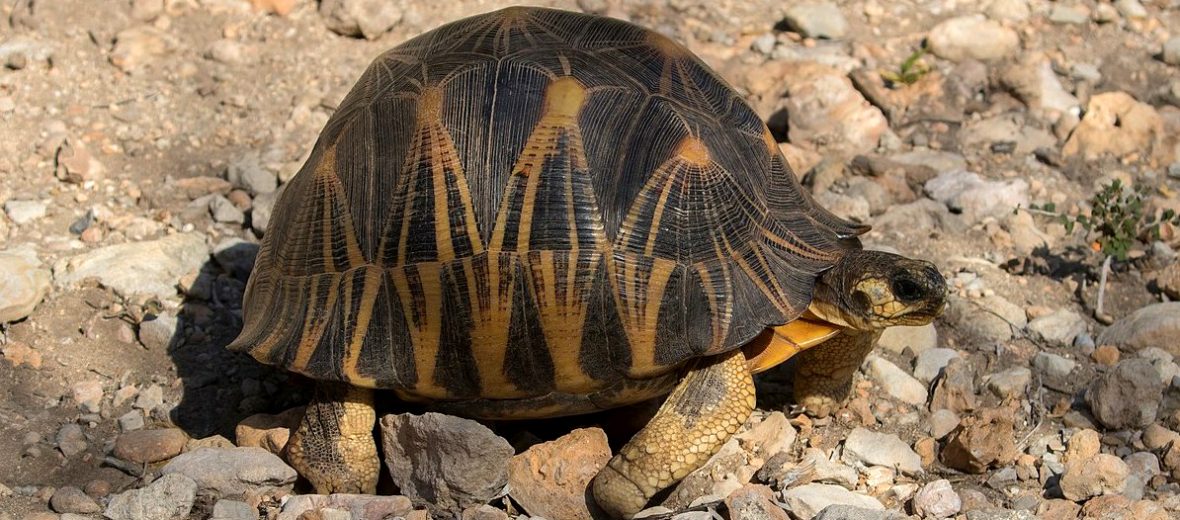
The radiated tortoise, aka sokake, hails from southern Madagascar. Although, they have been introduced to Réunion and Mauritius. In true tortoise fashion, they like it hot and dry. These tortoises prefer dry forests, thorn (diderae) forests, and woodlands. The radiated tortoise is threatened with habitat destruction at the hands of logging and livestock management; hunting; trapping; and invasive species (and with them disease and competition for food). As a result, they are listed as Critically Endangered. Their populations are also decreasing.
First the Stats…
Scientific name: Astrochelys radiata
Weight: Up to 23 lbs.
Length: Up to 15.5 inches
Lifespan: Up to 100+ years
Now on to the Facts!
1.) Even though you can sometimes witness several grouped together, grazing, these tortoises are typically solitary.
2.) A group of tortoises is called a bale, creep, dole, nest, or turn.
3.) Radiated tortoises are diurnal (active during the day), like other tortoises.
4.) When it’s available, water is consumed in mass by these critters. But then they can go for extended periods without water, getting the moisture they need from the plants they eat.
5.) Flowers, grasses, leaves, fruit, and cacti make up their diet. But dead leaves are also consumed with great vigor.
But wait, there’s more on the radiated tortoise!
6.) During the hotter times of the day, they will retreat to burrows to avoid overheating and dehydration.
7.) When faced with a predator, they will emit a loud screech to try and scare off the foe.
Did you know…?
If captured, this tortoise can produce loud, high-pitched screams that can go on for nearly an hour!
8.) Males fight other males for breeding rights by ramming each other with the gular projection portion of their plastron (the bottom half of their shell) and attempt to roll the other onto their back.
9.) Courtship involves the male bobbing his head and sniffing the female’s rear end.
10.) Females dig a nest and buries her up to 12 eggs.
But wait, there’s still more on the radiated tortoise!
11.) Eggs hatch in up to 231 days.
12.) Radiated tortoises seem to almost dance in the rain. It is believed that they are shimmying to shake off dirt and debris from their carapace (shell).
Did you know…?
The oldest recorded radiated tortoise was an individual named Tu’i Malila, who lived to be a whopping 188 years old!
13.) These are considered to be among the world’s rarest tortoise species.
14.) Like all tortoises, the shell contains nerves and blood vessels. This allows them to feel when they are being touched.
15.) Local tribes consider it taboo to touch or eat this tortoise.
Now a Short Radiated Tortoise Video!
Be sure to share & comment below! Also, check out the Critter Science YouTube channel. Videos added regularly!
Want to suggest a critter for me to write about? Let me know here.
Photo credit: Sharp Photography.



